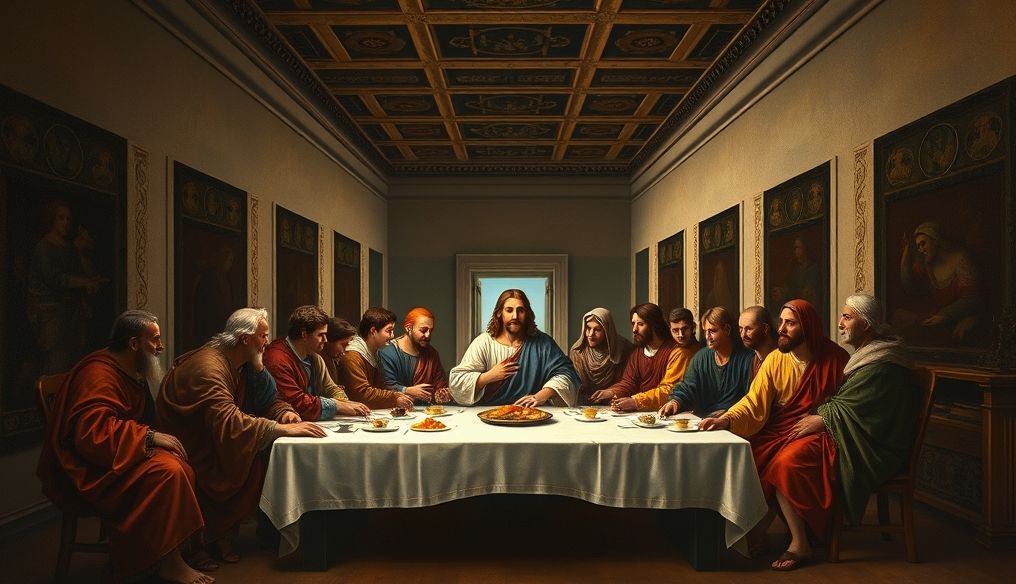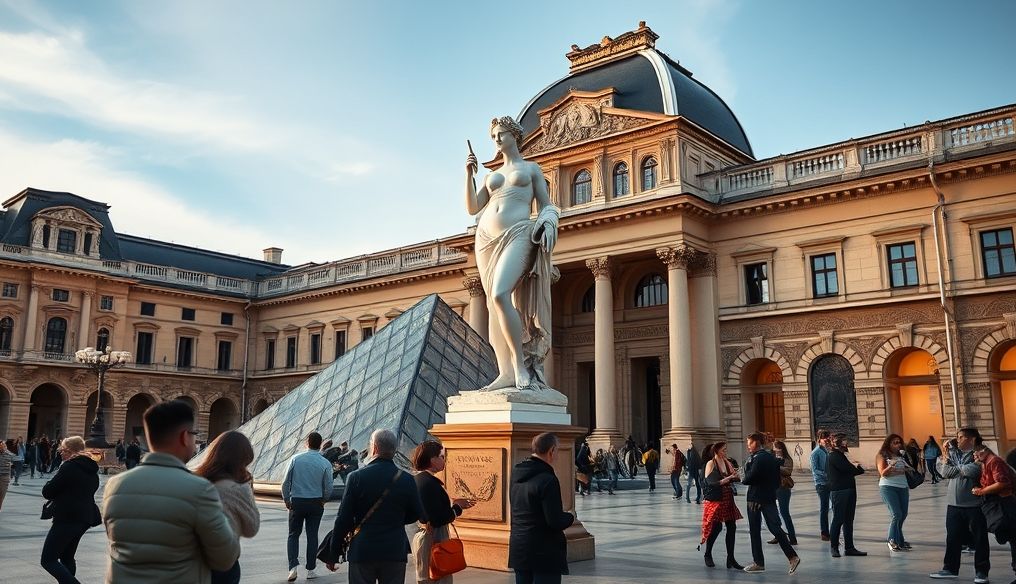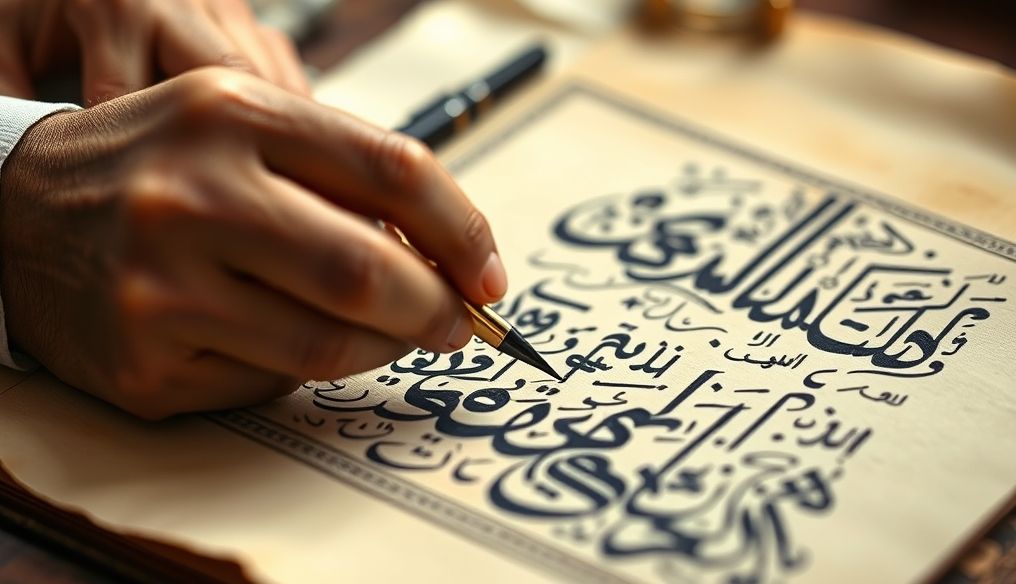Introduction to Da Vinci's World: Beyond the Mona Lisa
Leonardo da Vinci, the artist, engineer, and scientist, is one of the greatest minds in history. While the Mona Lisa captures most of the attention, Da Vinci's other works reveal his multifaceted genius. In this article, we will explore his most famous paintings besides the Mona Lisa, delving into the stories and techniques that have made these works timeless.
1. The Last Supper: A Masterpiece of Art and Religion
The Last Supper is one of Da Vinci's most famous works, depicting the moment when Jesus Christ announced the betrayal of one of his disciples. This mural was painted in the refectory of the Convent of Santa Maria delle Grazie in Milan.
Da Vinci's Techniques in The Last Supper:
- Central Perspective: Da Vinci masterfully used central perspective to guide the viewer's eye towards Jesus, making him the focal point of the painting.
- Expression of Emotions: Da Vinci managed to capture a wide range of emotions on the faces of the disciples, from astonishment to anger to sadness.
- Dynamic Composition: Unlike traditional depictions of the Last Supper, Da Vinci grouped the disciples in clusters, giving the painting a sense of movement and vitality.
Conservation Challenges:
Due to the experimental technique Da Vinci used in painting the mural, The Last Supper suffered from early deterioration. The painting has undergone several restorations over the centuries, and conservation efforts continue to this day.
2. Virgin of the Rocks: Mystery of Colors and Light
There are two versions of the Virgin of the Rocks, one in the Louvre Museum in Paris and the other in the National Gallery in London. The painting depicts the Virgin Mary, the infant Jesus, John the Baptist, and an angel in a rocky grotto.
Artistic Characteristics of Virgin of the Rocks:
- Sfumato: Da Vinci used the sfumato technique to create an atmosphere of mystery and softness, giving the figures an ethereal appearance.
- Pyramidal Composition: The overall composition of the painting follows a pyramidal shape, giving it a sense of stability and balance.
- Botanical Details: Da Vinci included detailed depictions of the rocky plants, demonstrating his keen interest in scientific observation.
Differences Between the Two Versions:
The two versions differ in some details, such as the presence of a halo above John the Baptist's head in the London version and its absence in the Louvre version. Some historians believe that Da Vinci painted the first version, while his assistants completed the second version.
3. The Virgin and Child with Saint Anne: Complex Relationships
This painting depicts Saint Anne (the Virgin Mary's mother) with her daughter Mary and the infant Jesus. The painting is unfinished, but it is still considered a masterpiece.
Symbolism of the Painting:
- Family Relationships: The painting explores the complex relationships between different generations in the Holy Family.
- Sacrifice: Mary's gaze at the infant Jesus suggests her knowledge of his tragic fate, adding a dimension of sacrifice to the painting.
- Movement: Although the painting is unfinished, Da Vinci managed to impart a sense of movement and vitality to the figures.
Painting Technique:
Da Vinci used the sfumato technique in this painting as well, giving the figures a soft and realistic appearance. He also used the chiaroscuro technique to create a strong contrast between light and shadow, adding depth to the painting.
4. Saint John the Baptist: Enigmatic Smile
This painting depicts Saint John the Baptist pointing to heaven with his right hand while smiling enigmatically. This painting is considered one of Da Vinci's last works.
Mystery of Expression:
Saint John the Baptist's smile is similar to the Mona Lisa's smile, raising questions about the meaning behind this enigmatic expression. Some believe that the smile expresses spiritual knowledge, while others see it as simply an artistic expression.
Influence on Art:
This painting has influenced many subsequent artists who were inspired by Da Vinci's style in depicting religious figures.
5. Annunciation: A Historic Moment
This painting depicts the moment when the Angel Gabriel announces to the Virgin Mary that she will conceive Jesus Christ. This painting is considered one of Da Vinci's early works.
Architectural Details:
The painting features detailed architectural details, such as columns, arches, and decorations. This attention to detail reflects Da Vinci's study of architecture.
Botanical Symbolism:
The painting includes many botanical symbols, such as the lily flower, which symbolizes purity and innocence. This use of symbols reflects Da Vinci's deep knowledge of Christian culture.
6. Head of a Woman (La Scapigliata): Beauty in Simplicity
This drawing is a study of a woman's head, and it is believed to be part of a larger unfinished painting. The drawing is characterized by its beauty and simplicity.
Technique Used:
Da Vinci used silverpoint to create this drawing, allowing him to achieve fine details and soft shadows.
Expression of Beauty:
Although the drawing is unfinished, it embodies the beauty of the woman in a wonderful way. Some believe that Da Vinci was trying to capture the essence of feminine beauty in this drawing.
7. Benois Madonna: A Glimpse into Daily Life
The Benois Madonna is one of Da Vinci's early works, depicting the Virgin Mary playing with the infant Jesus with a flower. The painting is characterized by its realism and simplicity.
Realism in Depiction:
Unlike traditional depictions of the Virgin and Child, this painting depicts Mary playing with her son in a natural and realistic way. This realistic approach reflects Da Vinci's interest in everyday life.
Simple Composition:
The overall composition of the painting is simple, with Da Vinci focusing on the relationship between Mary and the infant Jesus. This simple composition makes the painting particularly impactful.
8. Vitruvian Man: Embodiment of Human Perfection
The Vitruvian Man is not a painting in the traditional sense, but rather an illustration representing the ideal proportions of the human body according to the ideas of the Roman architect Vitruvius. This drawing is considered a symbol of the Renaissance and an embodiment of human perfection.
Golden Ratio:
The drawing is based on the concept of the golden ratio, a mathematical ratio believed to exist in nature and in art. This interest in mathematics and geometry reflects Da Vinci's study of the relationship between art and science.
Symbolism of the Drawing:
The drawing represents man as the center of the universe, reflecting the belief that man is capable of understanding the world around him. This drawing is considered a symbol of optimism and faith in man's ability to achieve perfection.
Conclusion: Da Vinci's Timeless Legacy
Da Vinci's paintings other than the Mona Lisa show his multifaceted genius, his keen attention to detail, and his ability to capture human emotions. These timeless works of art continue to inspire and impress people around the world.




